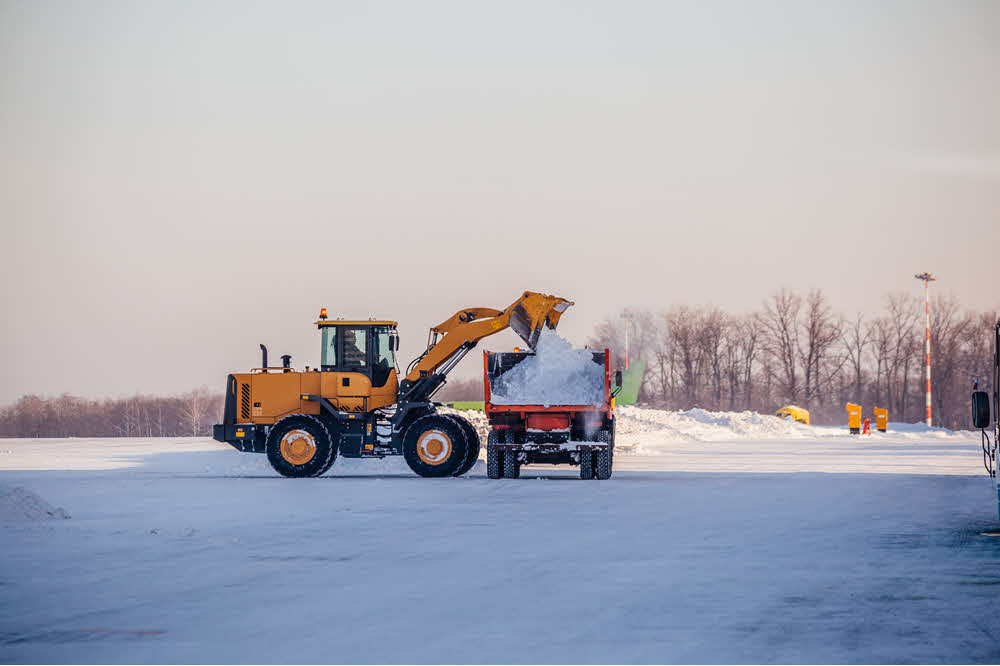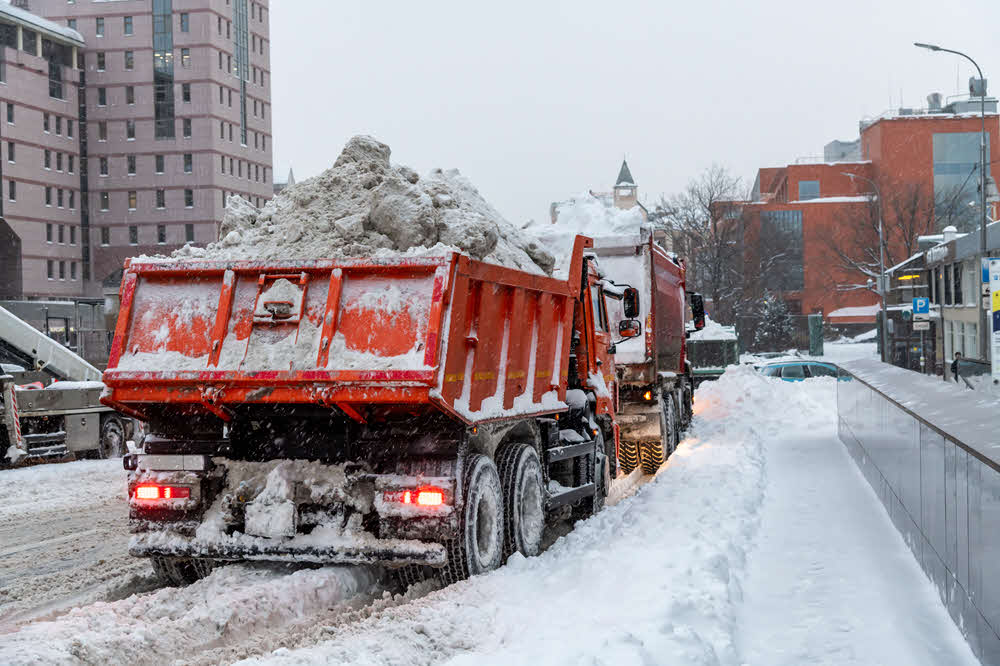Snow Relocationin Madison Heights MI
Professional Snow RelocationFor Unobstructed Pathways
We Are Locally Owned & Operated For Over 37 Years
Contact Us Today!
We Serve Businesses In And Around The Following Cities:
About Snow Relocation
Introduction
Welcome to a comprehensive guide to snow relocation tailored for Madison Heights’ commercial properties. In this information-packed piece, you will uncover insightful details that delineate the process, the benefits it offers to businesses, and shed light on real-world applications of snow management solutions. As a city that endures frequent snowfall, the commercial landscape of Madison Heights is transformed every winter, creating a challenging environment for businesses. This guide showcases how to tackle these hardships through efficient large-scale snow relocation, converting adversity into advantage.
The Intricacies of Snow Relocation
Snow relocation is not merely moving heaps of snow from one place to another. The process is, in reality, a systematic endeavor that involves significant care, precision, and the use of specialized equipment. Essentially, snow hauling involves gathering snow from commercial premises, loading it onto trucks, and transporting it to a designated dumping site. A professional team, like the one at D&J Contracting, deftly handles these steps, ensuring the efficient removal and relocation of snow, causing minimal disruption to commercial activities.
While the steps sound straightforward, actual implementation often involves much more. Each snowfall case varies in its severity and, therefore, requires tailored approaches. With techniques such as plowing, blowing, and even melting, well-equipped and experienced snow management solutions providers help Madison Heights’ businesses maintain their operational rhythm, even amidst a heavy snowfall.
The Benefits of Commercial Snow Hauling
Effective removal and relocation of snow from commercial properties is not optional—it’s necessary for Madison Heights’ businesses. The safety of clients and staff members can be significantly undermined if snow piles hamper visibility and render premixes inaccessible. Removing accumulated snow effectively, therefore, promotes public safety and prevents potential accidents. Thus, businesses can also protect themselves from potential legal issues related to mishaps due to unattended snow.
Large-scale snow relocation also helps in lessening the impact of snowfall on daily operations. Crucial commercial activities such as deliveries, customer visits, and employee arrival can be severely hindered by unmanaged snow, affecting the business’s bottom line. Efficient snow transport services like those offered by D&J Contracting help businesses navigate such challenges and effectively eliminate the snow-induced business interruptions.
Real-World Applications and Examples
Maintaining business Continuity in a snow-laden landscape is far from easy. Real-world examples of snow management in Madison Heights highlight the pivotal role of services like those provided by D&J Contracting. Large departmental stores, for instance, see a high footfall of customers even during severe winters. Efficient snow transport services help these stores maintain their operational tempo, providing safe access to customers and employees alike.
Moreover, consider offices housed in commercial buildings. Parking lots packed with snow can quickly become a hurdle for employees, affecting their daily productivity. Scheduled snow hauling activities help circumvent these issues by keeping the snow at bay.
Imagine healthcare institutions during snowfall. There, the importance of continuous access gets magnified for emergency situations. By leveraging effective snow management solutions, these vital institutions can ensure that they remain accessible at all times, safeguarding community health and wellbeing.
The Valuable Role of Professional Snow Management Services
Tasking an expert snow management team like D&J Contracting with your snow relocation needs can spell the difference between a well-maintained, accessible business premise, and one where chaos reigns amid unmanaged snow. With professional expertise, proper tools, and precision-driven approach, D&J Contracting caters to your specific needs, ensuring smooth operations for your business, regardless of the severity of the snowfall.
As you have browsed through this guide, which we hope has shed light on the intricate process of snow relocation, the benefits it holds for your business, and how its real-world application can make winters in Madison Heights less burdensome for your company. You’re now well-armed with information, providing a clear path forward for your business during the snowy months. If you feel your business could benefit from professional snow management solutions, don’t hesitate to reach out to a reputable, experienced team like D&J Contracting—they are there to serve your needs and ensure that snowfall doesn’t snowball into operational challenges for your business.
Snow Relocation Gallery


Call Us Today to receive your Free Quote for
Snow Relocation in Madison Heights
Serving: Madison Heights, Michigan

About Madison Heights, Michigan
Originally part of Royal Oak Township, Madison Heights incorporated as a city by popular vote on January 17, 1955, and chartered on December 6 of that same year, becoming the tenth city government in southern Oakland County. At that time, the 7.2 square miles (18.6 km) city was one of the largest suburban communities in the Metro Detroit area. The first city hall was at 26305 John R Road, the former township offices. On April 5, 1963, a new municipal building was dedicated which is on the present location at 300 West Thirteen Mile Road. The city lies in the Interstate 696 (I-696) and I-75 corridor and is served by two primary school districts, Lamphere and Madison, as well as a full-service municipal government.
According to the United States Census Bureau, the city has a total area of 7.09 square miles (18.36 km), all land.
Although 91% of the buildings in Madison Heights are single-family homes or condominiums (approximately 9,800 residential property owners), 60% of the tax base is fueled by light industrial or commercial property. The city has 15 voting precincts, totaling more than 21,000 registered voters.
Madison Heights shares borders with Troy to the north, Royal Oak to the west, Hazel Park to the south, and Warren to the east. The eastern border of Madison Heights (Dequindre Road) is also the border between Oakland and Macomb counties.
There are more than 112 miles (180 km) of road within Madison Heights, of which the city maintains 105 miles (169 km), 95 miles (153 km) for snow removal, sweeping, and patching. Interstate 75 passes north to south on the west side of the city, and Interstate 696 is the major feature of its southern border. The junction of these two highways is shared with Royal Oak and Hazel Park on the southwest corner of Madison Heights.
| Census | Pop. | Note | %± |
|---|---|---|---|
| 1960 | 33,343 | — | |
| 1970 | 38,599 | 15.8% | |
| 1980 | 35,375 | −8.4% | |
| 1990 | 31,296 | −11.5% | |
| 2000 | 31,101 | −0.6% | |
| 2010 | 29,694 | −4.5% | |
| 2020 | 28,468 | −4.1% | |
| U.S. Decennial Census | |||
As of the 2020 United States census of 2020, there were 28,468 people and 13,487 households in the city. The population per square mile is 4,017.5.
The racial makeup of the city was 80.4% White, 7.8% African American, 0.2% Native American, 7.2% Asian, 0.1% Pacific Islander, 3.6% from two or more races. Hispanic or Latino residents of any race were 2.0% of the population.
There were 13,487 households, of which 14.7% spoke a language other than English at home. People under 65 years of age with a disability accounted for 11.1% of the city’s population, and 11.7% of the city’s population was living below the federal poverty line. Households without a broadband internet subscriptions made up 11.9% of the community.
16% of residents were under the age of 18; and 16.3% were 65 years of age or older. The gender makeup of the city was 49.4% male and 50.6% female.
As of the census of 2010, there were 29,694 people, 12,712 households, and 7,543 families residing in the city. The population density was 4,188.2 inhabitants per square mile (1,617.1/km). There were 13,685 housing units at an average density of 1,930.2 per square mile (745.3/km). The racial makeup of the city was 83.9% White, 6.4% African American, 0.5% Native American, 5.8% Asian, 0.1% Pacific Islander, 0.7% from other races, and 2.7% from two or more races. Hispanic or Latino residents of any race were 2.5% of the population.
There were 12,712 households, of which 27.5% had children under the age of 18 living with them, 41.0% were married couples living together, 12.9% had a female householder with no husband present, 5.4% had a male householder with no wife present, and 40.7% were non-families. 34.1% of all households were made up of individuals, and 11.8% had someone living alone who was 65 years of age or older. The average household size was 2.32 and the average family size was 3.02.
The median age in the city was 38.3 years. 20.4% of residents were under the age of 18; 8.7% were between the ages of 18 and 24; 30.4% were from 25 to 44; 26.6% were from 45 to 64; and 13.9% were 65 years of age or older. The gender makeup of the city was 49.1% male and 50.9% female.
As of the 2000 United States census, there were 31,101 people, 13,299 households, and 8,005 families residing in the city. The population density was 4,341.3 inhabitants per square mile (1,676.2/km). There were 13,623 housing units at an average density of 1,901.6 per square mile (734.2/km). The city’s racial makeup was 89.60% White, 1.82% African American, 0.44% Native American, 4.97% Asian, 0.03% Pacific Islander, 0.46% from other races, and 2.68% from two or more races. Hispanic or Latino residents of any race were 1.61% of the population.
There were 13,299 households, of which 26.9% had children under the age of 18 living with them, 45.2% were married couples living together, 10.5% had a female householder with no husband present, and 39.8% were non-families. 33.8% of all households were made up of individuals, and 12.3% had someone living alone who was 65 years of age or older. The average household size was 2.33 and the average family size was 3.02.
In the city, 22.1% of the population was under the age of 18, 8.1% was from 18 to 24, 35.4% from 25 to 44, 20.2% from 45 to 64, and 14.2% was 65 years of age or older. The median age was 36 years. For every 100 females, there were 95.8 males. For every 100 females age 18 and over, there were 92.9 males.
The city’s median household income was $42,326, and the median family income was $51,364. Males had a median income of $41,478 versus $29,345 for females. The city’s per capita income was $21,429. About 7.0% of families and 8.9% of the population were below the poverty line, including 10.8% of those under age 18 and 13.0% of those age 65 or over.
In 2008, 1.9% of the Madison Heights population were of Vietnamese descent. 168 Asian Mart, a 38,000-square-foot (3,500 m) supermarket, is the largest Asian supermarket in southeast Michigan, and one of the largest in the state. The Chinese Cultural Center is in Madison Heights.
The mayor of Madison Heights is Roslyn Grafstein, who was appointed as Mayor in August 2020 to fill a vacant seat.
Madison District Public Schools and Lamphere Public Schools have public schools serving Madison Heights.
Bishop Foley Catholic High School is a private school.
Four Corners Montessori Academy is a public charter school.
Call Us Today to receive your Free Quote for
Snow Relocation in Madison Heights
Related Services in Madison Heights, Michigan
We Serve Businesses In The Following Zip Codes:
48007, 48015, 48021, 48026, 48035, 48036, 48038, 48042, 48043, 48044, 48045, 48046, 48047, 48048, 48050, 48051, 48066, 48071, 48080, 48081, 48082, 48083, 48084, 48085, 48088, 48089, 48090, 48091, 48092, 48093, 48098, 48099, 48225, 48230, 48236, 48310, 48311, 48312, 48313, 48314, 48315, 48316, 48317, 48318, 48397